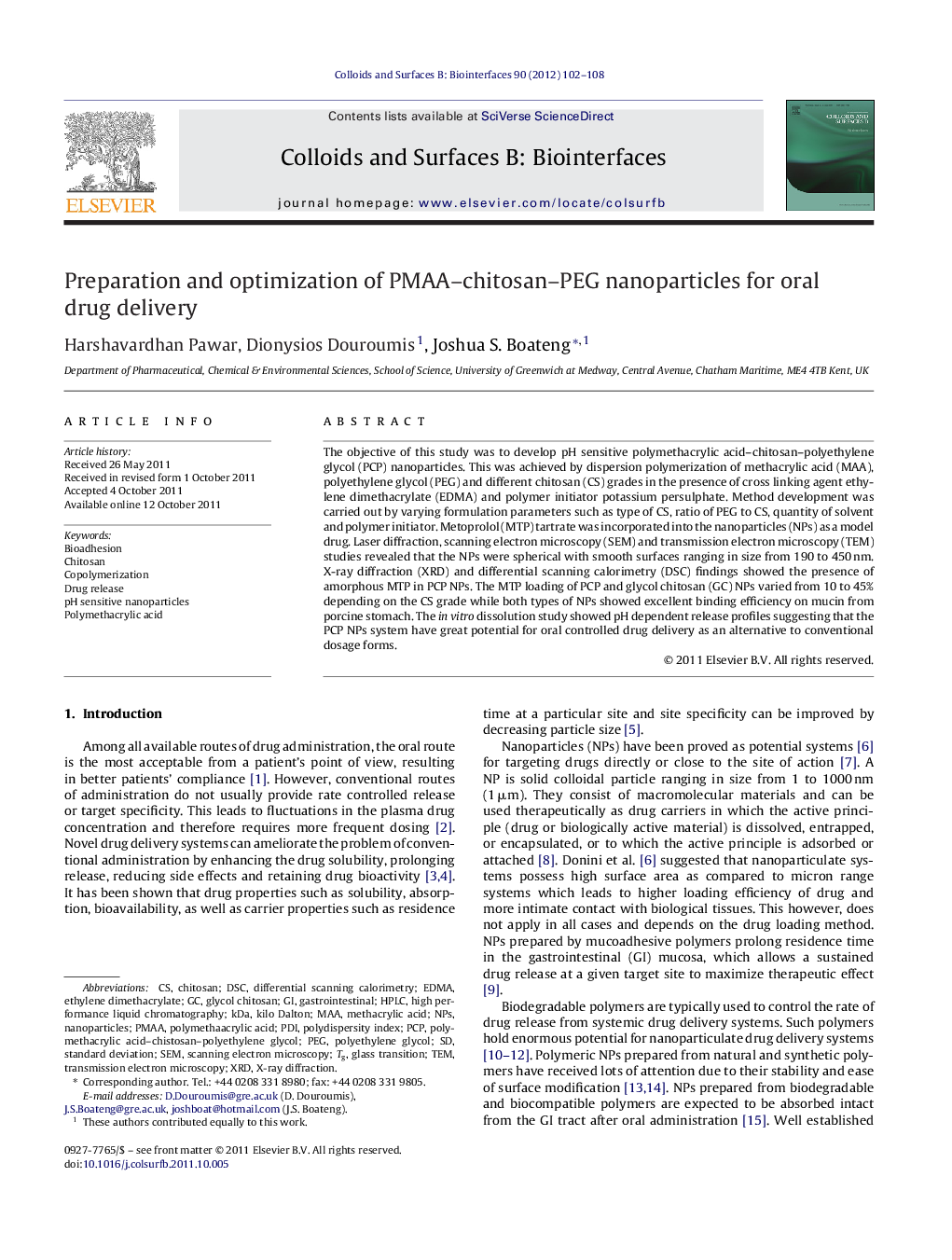| Article ID | Journal | Published Year | Pages | File Type |
|---|---|---|---|---|
| 600933 | Colloids and Surfaces B: Biointerfaces | 2012 | 7 Pages |
The objective of this study was to develop pH sensitive polymethacrylic acid–chitosan–polyethylene glycol (PCP) nanoparticles. This was achieved by dispersion polymerization of methacrylic acid (MAA), polyethylene glycol (PEG) and different chitosan (CS) grades in the presence of cross linking agent ethylene dimethacrylate (EDMA) and polymer initiator potassium persulphate. Method development was carried out by varying formulation parameters such as type of CS, ratio of PEG to CS, quantity of solvent and polymer initiator. Metoprolol (MTP) tartrate was incorporated into the nanoparticles (NPs) as a model drug. Laser diffraction, scanning electron microscopy (SEM) and transmission electron microscopy (TEM) studies revealed that the NPs were spherical with smooth surfaces ranging in size from 190 to 450 nm. X-ray diffraction (XRD) and differential scanning calorimetry (DSC) findings showed the presence of amorphous MTP in PCP NPs. The MTP loading of PCP and glycol chitosan (GC) NPs varied from 10 to 45% depending on the CS grade while both types of NPs showed excellent binding efficiency on mucin from porcine stomach. The in vitro dissolution study showed pH dependent release profiles suggesting that the PCP NPs system have great potential for oral controlled drug delivery as an alternative to conventional dosage forms.
Graphical abstractFigure optionsDownload full-size imageDownload as PowerPoint slideHighlights► Uniform, spherical PMAA–chitosan nanoparticles for oral drug delivery prepared by dispersion polymerization. ► Empty nanoparticles approximately 200–300 nm. ► Metoprolol loaded nanoparticles approximately 330 nm. ► Metoprolol present within nanoparticles in amorphous form. ► pH dependent drug release from nanoparticles.
